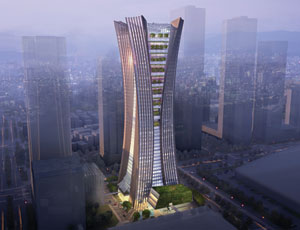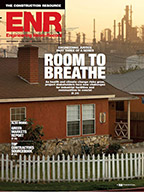Despite a diminished head count at its London-based headquarters, the global engineering firm Arup has opened overseas architecture offices for the first time in its 65-year history.

The three new offices, which were inaugurated in early April, are located in the cities of Beijing, Shanghai and Shenzhen, China. Each employs about 15 architects and 12 engineers, many of them Chinese nationals, according to company spokeswoman Joanne Ronaldson.
The firm's architecture arm, founded in 1963, is officially known as Arup Associates.
Ronaldson declined to explain the reasons for the expansion. However, earlier this month, Declan O'Carroll, Arup's head of global architecture, told the British publication Building Design that China's pro-development approach presented ample design opportunities. “The traditional model of the Western international practice has been to have a shop window in developing countries but with the work executed back at home,” he was quoted as saying. “We are looking at a much more fluid, unorthodox model.”
In the 18 months since it began working in China, Arup Associates has been keeping busy. In Beijing, for example, the firm designed a Chinese campus for Nokia, the telecom company. The campus' main office building, which features a soaring glass-roofed atrium, accommodates 2,300 employees.
Plus, Arup Associates has designed a new home for Ding He, a Chinese insurance company, in Shenzhen. The tower, which will contain 1.2 million sq ft of office space, flares outward at its upper levels.
The overseas moves come as parent company Arup, founded in England by engineer Ove Arup in 1946, face struggles at home. At its recent peak, the company employed 10,000 employees in 90 international offices. But, in 2009, it cut 330 jobs, and another 670 employees were let go this winter as public contracts dried up in England due to budget cuts, according to news reports.



Post a comment to this article
Report Abusive Comment